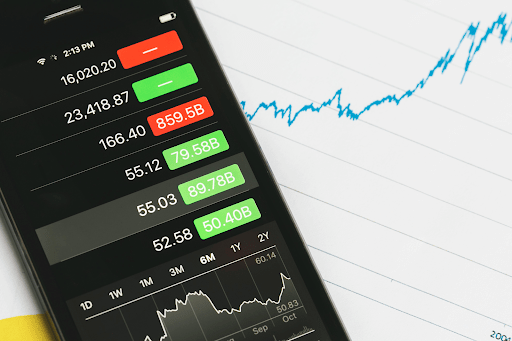Wealthtender is a trusted, independent financial directory and educational resource governed by our strict Editorial Policy, Integrity Standards, and Terms of Use. While we receive compensation from featured professionals (a natural conflict of interest), we always operate with integrity and transparency to earn your trust. Wealthtender is not a client of these providers.

When I say ‘one percent’ out loud, it really doesn’t sound like a lot.
The most common experience people have with 1% making a difference in their life is probably when it comes to their GPA, the difference between letter grades. In most other cases 1% doesn’t sound like a lot. To me a 1% difference in the milk I buy doesn’t make me like it a whole lot more. Or with NBA shooting percentages, 1% is nearly irrelevant. 1% is such a small difference that it really only matters over very large scales. How can 1% impact most of our daily lives?
One thing that 1% can make a big difference for each of us is our finances. Whether we are looking at the best sale, wanting to avoid tax, taking out a loan or getting a mortgage; we are always looking for the best deal. If we can save money and get a better deal, that really highlights the product or service and we will usually find a way to convince ourselves it’s a good deal we can’t miss out on. I think it’s good to save money where we can, a few dollars here and there really does add up.
If we use this same way of thinking and apply it to our finances, the end product will be a lot bigger than a few dollars here and there adding up.
Honestly I never fully appreciated the impact that 1% can make in investing over my lifetime until I looked into it for myself and did the math, and it’s shocking. A 1% difference can be in the ballpark of around 1/3 of your total savings at retirement, that’s crazy. As a young person with a lot of time to save my money and grow my investments 1% is a lot.
To show the difference 1% makes take a look at the graph below. It compares how a $10,000 lump sum investment performs at different rates of return. Now, in the real world it would be unlikely to get the exact same returns for the lifetime of your investments, but it’s just to emphasize the impact that 1% can make. A thing to keep in mind is this graph is based on one lump sum of $10,000, just with that amount it can make a significant difference. If you take a look at your own investment account and contribution plan, the more you invest the larger that difference becomes.

Looking at the graph the biggest differences in portfolio growth come in the final years of the investment life, reinforcing that investing is about time-in and not timing. After 40 years a 1% difference in returns works out to be about 1/3 of the total amount and having a 2% higher return essentially doubles your money. 40 years is a long time and maybe that’s tough to put into perspective. So if we look at 18 years, maybe you start an RESP when your child is born, a 9% return over 18 years would be nearly double what a 5% return would be.
So here comes the (potentially) million dollar question, how can I get a 1% higher return?
Getting a higher return doesn’t necessarily mean putting your money at greater risk. So let’s look at a few options you can do with relative ease.
- Increasing your risk tolerance — this might not be the most popular option but it is an option. Especially when you’re young and have a long time left to invest, it is the best time to have your money invested in higher risk options and as you age move towards more conservative options. Risk can seem intimidating but it is similar to any other fear, if you can take to understand and learn about it you can minimize the uncertainty.
- Assessing how your money is allocated — having money invested in high return options won’t make a big difference if the allocation is wrong. For example: if you invested $10,000 — $1,000 of that at 10% return and $9,000 in a conservative bond let’s say 3% — your average return would only be 3.7%. Make sure your fund allocation meets your age and investing strategy. Some places use a ‘100 minus age’ to determine a guideline for stock allocation (100–30 years old = 70% allocated to stocks, 30% to bond, cash or conservative investments).
- Pay lower fees — like with anything else we do, shop around, find the best deal. Whether you’re investing yourself or through an advisor you’re going to have to pay something in fees. Just be careful, high fees don’t translate to the best returns.
Knowing your options and making sure you have access to your highest return will give you confidence in your choice and the peace of mind that you’re doing everything you can. Even if you feel like you’re getting into investing later than you’d like, the things you learn and habits you develop can be passed on to anyone you know. Like building a community of better educated investors.
By making the most of your return, this not only creates the opportunity of retiring with more money but also the flexibility of when you can retire. If you determine you need $XXX,XXX amount to retire, well if you can reach that amount sooner then you have more choice. If you want to keep working you can, if you want to travel or begin your retirement go for it. Have the freedom to live the life and lifestyle you want, your future self will thank you.

About the Author
Derek Condon, CFP®
Wealthtender is a trusted, independent financial directory and educational resource governed by our strict Editorial Policy, Integrity Standards, and Terms of Use. While we receive compensation from featured professionals (a natural conflict of interest), we always operate with integrity and transparency to earn your trust. Wealthtender is not a client of these providers.

